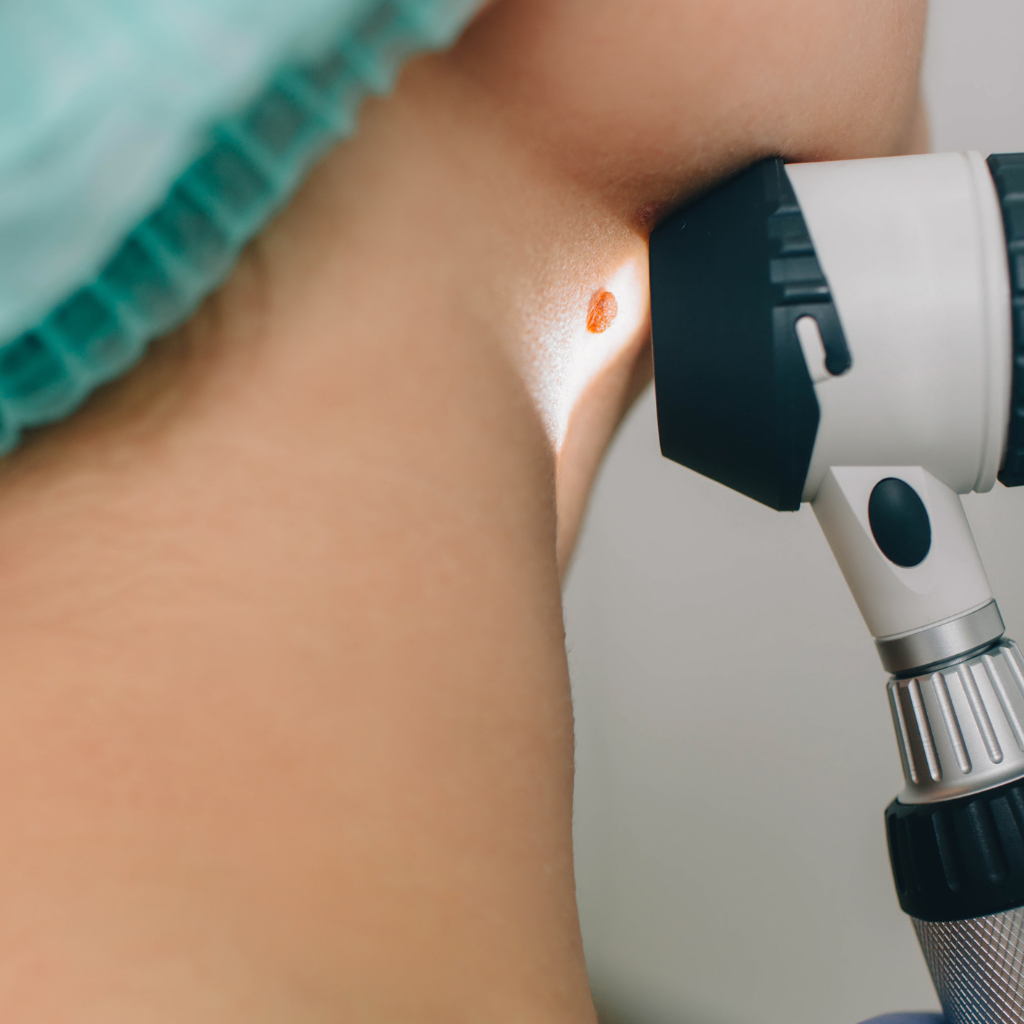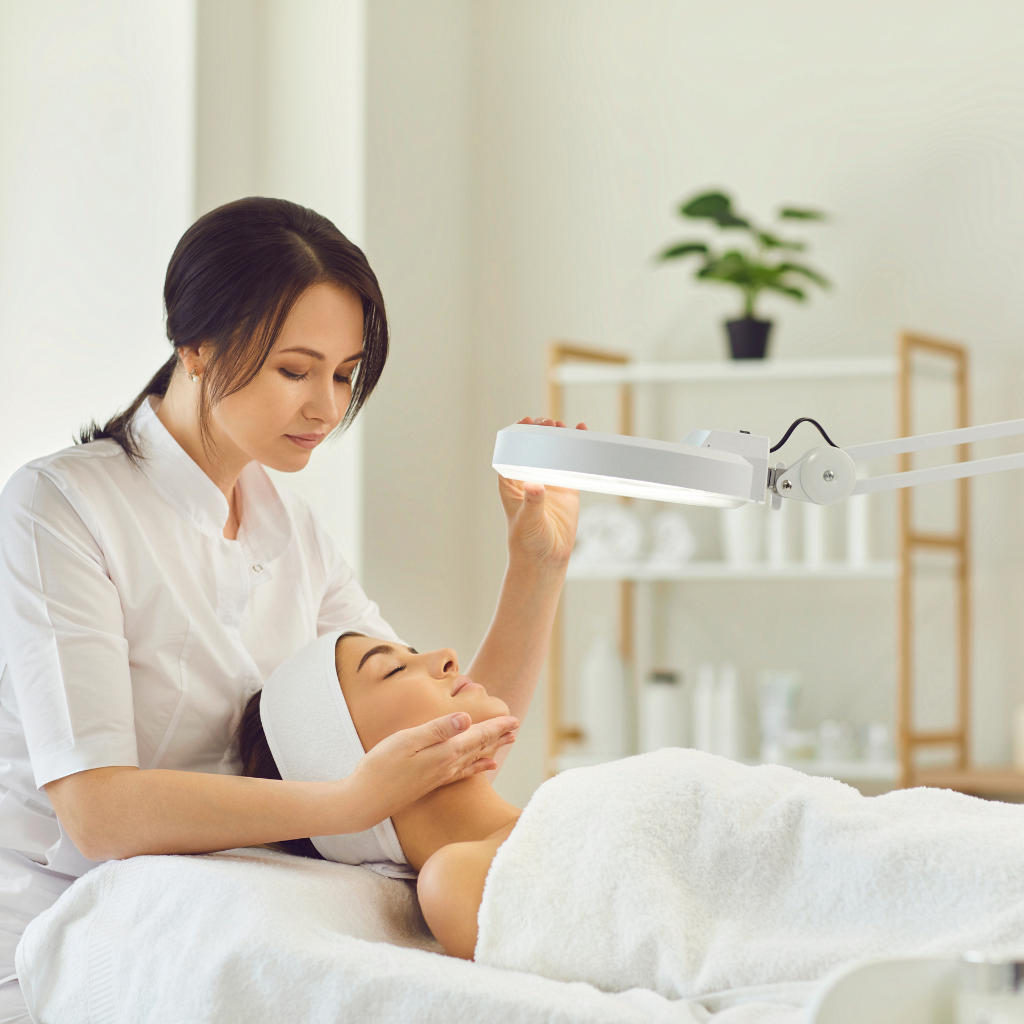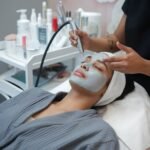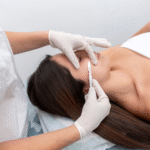How to Remove Moles from Face: A Simple Guide to Clearer Skin
- Home
- Mole, Wart & Skin Tag Removal
- how to remove moles from face

Many people wonder how to remove moles from the face without causing scars or complications. Some moles can look cute, while others can be bothersome. Questions often arise about whether home remedies like how to remove moles from face naturally are effective or if medical help is needed. This blog explores different ways to clear moles on face, discussing basic details on what moles are—clusters of skin cells—and their place among common skin growths, potential risks, and how to address them safely. We will walk through practical tips, professional treatments, home remedies to try, and aftercare suggestions. Our goal is to clear up the confusion so you can make a good decision and feel confident about your skin.
Understanding Moles: From Benign to Atypical Mole
Facial moles happen when pigment-producing mole cells grow in clusters. These clusters can appear during childhood or at any point in life. Most are benign moles and do not require special attention, often blending naturally with healthy skin. A few, however, can be atypical. When any mole looks odd or changes quickly, it might signal deeper issues. Atypical mole features can include uneven colors, dark brown spots, or ragged borders. Paying attention to how these skin growths evolve can help catch problems early.
In many cases, a typical mole stays small and uniform. An atypical mole might increase in size or become multicolored. Recognizing the differences is a key first step in deciding on removal, whether for cosmetic reasons or if the mole affects your health. For those wondering how to lighten moles on face, it’s important to consult a medical professional to ensure safe and effective treatment options.
Common Features of a Typical Mole
A regular mole is usually symmetrical, round or slightly oval, and often brown or black. Its edges are neatly defined most of the time. Many people have these moles on the face, arms, or trunk. They can stay the same size for years without changes. Additionally, common moles are often smaller than a pencil eraser. They usually do not hurt or itch, though some may become irritated due to friction or sun exposure. If you are curious about how to remove black moles from the face or how to remove small moles from the face, or wondering how do you get rid of moles on your face, there are many approaches available. Most of these moles do not present health risks, but it is wise to keep an eye on any changes, especially in pigmented patches that may resemble melanoma. This is particularly important for people with darker skin, where unusual types of moles might be overlooked. Always consider a thorough evaluation to rule out particularly malignant melanoma. While most cases are harmless, worry may arise if changes are noticed, so it’s best to consult a dermatologist and follow proper dermatologist’s post procedure care to avoid skin damage and ensure healthy recovery.
Spotting an Atypical Mole
An atypical mole might have one half that does not match the other half. Its size and shape can vary significantly, and its borders can appear jagged or blurry. Colors may vary, showing shades of tan, brown, pink, or dark brown, and some may have even changed color over time. The diameter may exceed six millimeters, but that is not always the case. Sometimes, an atypical mole can feel itchy or bleed, and in some cases, it may cause pain. These are important symptoms to monitor. Atypical moles develop due to irregular clusters of melanocytes, the pigment-producing cells in the skin. If you have any suspicion, especially if you are wondering if moles can be removed to rule out bigger problems, you might want an expert to examine it. Only a healthcare provider can determine whether a mole is safe or requires close monitoring. Using a microscope, a dermatologist can provide a precise diagnosis by evaluating the mole at a cellular level. Detecting potential issues early is critical, particularly if the mole appears to spread or stands out from other common skin lesions. Fortunately, many procedures now offer shorter recovery times, making it easier to address concerns without prolonged downtime.
Home Remedies: Do They Really Work?
Exploring how to remove moles from the face naturally is common. Many people look for gentle solutions before consulting a professional. While some swear by home treatments, results vary and depend on a mole’s size, depth, and your skin’s surface reaction. Home treatments are appealing because they are usually cheaper and easy to try at home. Yet, they often demand patience and consistent application. Some folks hope to learn how to remove skin moles on face or even how to remove moles naturally in one day, but instant solutions are rarely realistic. A balanced understanding of possible benefits and risks can help you decide if these methods are suitable for your skin type and situation. It’s an important step to evaluate not only the effectiveness of the method but also whether there’s any sign of disease in the mole. While most moles removal procedures are safe, including options like laser removal, it’s essential to know that no mole removal is completely risk-free. Some people ask, “Is mole removal painful?” and although discomfort is minimal, the healing process varies. Whether you’re considering natural methods or clinical treatment options, the method depends on the mole’s characteristics and whether it’s commonly found to be benign or potentially problematic. Always consult a healthcare provider before having a mole removed, especially from the face.
Popular Natural Approaches
Many DIY options are described in blogs or passed along by word of mouth. Apple cider vinegar and garlic are top suggestions, as some people think these ingredients help break down mole tissue. Banana peels also come up, with claims that enzymes in the peel might fade the spot. Tea tree oil is sometimes recommended. These ideas may help if you are curious about how to remove black moles, how to remove small moles from the face, or even how to remove flat moles from face permanently. Others suggest lemon juice to lighten darker areas slowly. While such methods may offer certain advantages, it’s important to note that not all skin types respond the same, and effects can vary based on the condition, size, and types of moles or other pigmented patches. If you try these, be careful and apply them only on the mole as directed, and always begin with cleaning the area. Doing a small skin test first is wise. Although some people report successful outcomes, natural remedies rarely guarantee complete removal, and the mole cause should always be evaluated. Consulting a healthcare professional is the best way to ensure safety and avoid complications, while also giving you more confidence in your skin care decisions.
Potential Risks of DIY Methods
Even if you are eager to learn how to remove a mole at home, possible drawbacks include skin burns, irritation, and scarring. Applying strong acids or potent essential oils without proper direction can lead to red skin, burning the mole, or allergic reactions. There is also a chance of missing an underlying problem if the mole is precancerous or irregular. When it comes to how to remove flat moles from the face naturally, the tissue might be deeper than expected—beyond the outer layer—limiting these home remedies. Some folks report mild success after consistent use, but there is no guarantee. While common methods may target the surface, deeper moles or those that grow over time could require an outpatient procedure. In such cases, a dermatologist may use a scalpel, local anesthetic, and prescribed ointments for aftercare, which minimizes pain and reduces healing time. Also, what may appear to be a mole could sometimes be birthmarks or other lesions, like those with a light tan appearance, making professional evaluation important. If a mole changes shape or color, do not rely on home-based fixes alone—some treatments may not fully destroy abnormal cells beneath the skin.
Professional Procedures for Removing Moles from the Face Permanently
While at-home methods might work for very small or superficial marks, professional treatments are usually the best bet to remove a mole from the face permanently. Doctors, dermatologists, or trained specialists use precise approaches to address the root of the mole, ensuring it is fully removed without damaging the surrounding skin. This helps minimize scarring, reduce the chance of recurrence, and confirm that the mole is not dangerous. Anyone who wonders how to remove flat moles from the face permanently or how to remove skin moles more reliably often turns to a clinic for help. Some individuals still consider how to get rid of flat moles on your face naturally, but natural methods rarely offer permanent results. In contrast, clinical approaches such as surgical removal, excision surgery, and other advanced surgical procedures provide higher accuracy and safety. These mole removal procedures are typically carried out by experienced dermatologists and are especially valuable for those who feel self conscious about facial moles. After treatment, patients must follow their healthcare provider’s instructions and detailed aftercare instructions to prevent infection, protect the treated area, and promote proper healing. While professional treatment may involve higher costs, it ensures long-term benefits and peace of mind.
Surgical Excision and Shave Removal
Many wonder if they can remove moles from the face without much fuss. Surgical excision removes the entire mole and a small margin of surrounding tissue, which is especially important when there is concern about malignant changes or melanoma. This method works well for deeper growths or suspicious spots that require careful evaluation to detect any signs of serious medical conditions. Stitches may be needed, and a small scar could remain, with healing time and recovery time varying depending on the size and location of the mole. For raised moles that do not extend far below the surface, a shave removal can smooth them down. Other options like cryotherapy may be used in less invasive cases, often involving a mixture of treatments for the best results. Neither method is particularly painful when performed by a skilled surgeon, and local numbing helps ease discomfort. Because moles on the face are frequently exposed, monitoring and early removal can protect your overall health. If you are curious about how to remove moles naturally, keep in mind that professional surgical methods often provide quicker, more lasting results. For those seeking more information, a detailed guide from a healthcare provider can help you understand all available options.
Laser Treatment for Flat Moles
Laser therapy is often recommended for people who want to learn how to remove flat moles from the face. A concentrated beam targets the pigmented cells. Multiple sessions might be required, but laser treatment can be precise and limit damage to nearby skin. It may be a smart solution for someone looking at how to remove flat moles from the face permanently, especially if the moles are not very large. However, laser therapy may not be ideal for deeply rooted or suspicious moles since a tissue sample is not sent for analysis. Recoveries are generally quick, with some mild redness that fades over time.
Treatment Method | Best For | Considerations |
Excision | Suspicious or deeper moles | Requires stitches, possible small scar |
Shave Removal | Raised moles with minimal root | Less scarring, quick procedure |
Laser Therapy | Flat, benign growths | Multiple sessions may be needed |
If you are unsure which is best for you, seeking professional advice can make the difference. Having a trained pair of eyes look at your moles ensures a safer and more confident course of action.

Consulting a Healthcare Provider: When It Matters
There are times when people want to know how to remove flat moles or how to remove black moles from the face, but they are unclear if it is safe to do it alone. A trusted dermatologist can assess each situation, checking whether a mole is harmless or needs deeper attention. The main types of moles are considered during this evaluation, as some might require specific techniques for removal. In some cases, the issue might be purely cosmetic, while in others, there is the possibility it could be an early warning sign of something else. If you notice rapid growth, changes in color, discharge, or any bleeding, do not wait. Early detection of unusual changes is the best thing you can do to prevent bigger problems. This professional evaluation, along with follow-up appointments, helps guide the best removal option and assists in managing any potential complications. It’s important to be aware of allergies or reactions, so a thorough consultation ensures your skin is properly covered and cared for throughout the process. The majority of mole removals go smoothly when done under professional supervision, helping you achieve safe and effective results.
Signs You Shouldn’t Ignore
Keep an eye out for asymmetrical moles, which have multiple shades in one spot or appear significantly larger than before. This is especially important for junctional moles or larger congenital moles that may be present from birth and require a closer look. Another warning sign is if a mole starts to feel itchy or bleeds. Unexplained redness around the mole could also be a cause for concern. Some folks wonder how to remove moles naturally, but significant changes often indicate you should see a pro to avoid complications like a permanent scar. Moles are usually brown and commonly found on areas such as the lower back, but if one changes drastically or doesn’t disappear over time, it’s important to find out what’s happening. If a mole on your face becomes lumpy or scaly, that is another sign. When in doubt, set up an appointment with your provider for a thorough check, even if the mole does not bother you aesthetically.
The Importance of Expert Guidance
While some wonder if facial moles can be removed by themselves, professional input is vital. Self-treating might overlook deeper concerns or turn a once-treatable situation into something that leaves scars. A doctor can perform a biopsy if needed, ensuring any worrisome cells are addressed promptly. This is especially relevant if you have multiple moles with unusual appearance or a personal or family history of skin cancer. Even for those who just want cosmetic improvements, a healthcare provider can advise on how to remove moles from the face in a way that supports healthy healing. Proper guidance means safer, more satisfying outcomes.

Aftercare: Healing and Scar Management
After any removal procedure, proper care can help your face recover smoothly and prevent dark marks or infections, whether you are treating common acquired moles or a cancerous mole. Whether you had a home remedy success or a clinic-based treatment, your skin needs time to bounce back without disturbance. Leaving the area undisturbed, protecting it from the sun, and using doctor-recommended ointments can all improve recovery and reduce the risk of complications. Washing gently with mild soap and patting dry helps maintain cleanliness, which is especially important when healing from the removal of potentially cancerous moles. While the skin heals, avoid harsh scrubs or chemical peels to prevent irritation or damage. Moisturizing creams can support the skin’s natural barrier, but should only be used at your provider’s recommendation to ensure they are safe for the treated area. Each method of mole removal is unique, so following personalized instructions after removal is the best way to ensure optimal healing and minimize the risk of scarring or infection, whether the mole was an acquired mole or a cancerous mole.
Immediate Steps Right After Removal
Right after any procedure, you may have a small wound or scab. Keeping it clean is critical to ward off bacteria. If your doctor recommends a dressing, be sure to change it as instructed. Avoid picking at scabs, which can result in scars or infections. If you just tried how to remove moles naturally, watch the area for redness or swelling. Most mild discomfort fades quickly, but watch for increased tenderness. Using a gentle cleanser keeps the area free of pinpoint debris. When heading outside, wear a hat or sunscreen to shield that sensitive spot. Short-term caution pays off in the long run.
Long-Term Skin Care Strategies
Scar prevention does not end once the initial wound heals. Keep the area moisturized to help new skin remain soft. A silicone gel sheet may minimize scar formation. If you want a lasting solution for how to remove flat moles from the face permanently or how to remove moles from the face permanently in general, consistent skincare plays a part in overall results. Sun exposure can darken scars, so daily sunscreen is essential. Some people opt for gentle scar creams with vitamin E or other nutrients. It’s important to remember that different types of moles, including spitz moles, may require specific care, especially if you notice hair growing from the mole area. While some home safe remedies are popular, professional advice is best for proper healing. Check in with your healthcare provider if you notice any bumps, discoloration, or unexpected healing problems.
Conclusion
Tackling how to remove moles from the face is a process that depends on the specifics of each spot and your personal preferences. Some prefer home remedies, while others decide on quick and professional solutions. It is possible to remove a mole at home, but be mindful that serious or rapidly changing moles need medical attention. Speak with a healthcare provider if you have questions about mole size or color or if your family has a history of skin cancer. Whether you choose laser treatment to remove flat moles, surgical excision for suspected growths, or gentle applications of natural substances, always prioritize safety. Thoughtful choices and steady care allow your face to look and feel its best.

Highly skilled cosmetologist at Tune Clinical Aesthetics, specializing in advanced skin and hair treatments.





